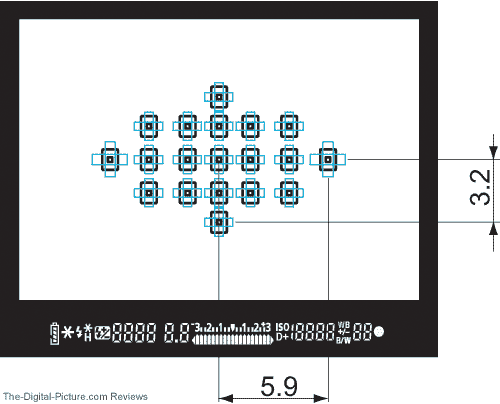If I had to pick a do-everything-well APS-C format camera that does not
cost a fortune, the Canon EOS 70D would be my recommendation.
This camera has it all - great image quality with high resolution, a
great AF system, a moderately large viewfinder, a fast/responsive
shutter release combined with a very nice frame rate, a great LCD and
compatibility with an incredible range of lenses, flashes and other
accessories.
And if video is on your bucket list, the camera will give you incredible
1080p high def video quality along with unprecedented Movie Servo AF
performance.
The EOS 60D was, in some regards, a step back from its EOS 50D predecessor.
It appeared that Canon was better slotting the 60D below the EOS 7D and above the EOS Rebel models.
The 70D loses almost no 60D functionality or features and adds considerably to them.
You can check out the
Canon EOS 70D vs. 60D specification comparison to fully compare these cameras,
but here are some of the highlight differences (70D vs. 60D respectively):
- 19 cross-type AF points (f/2.8 at center) vs. 9 cross-type AF points (f/2.8 at center)
- Dual Pixel CMOS AF in Live View including Movie Servo AF vs. contrast-only Live View AF with no Movie Servo AF
- 7 fps for 40/15 images (JPEG/RAW) vs. 5.3 fps vs. 58/16 images
- 20.2 vs. 18.0 megapixel sensor
- Built-in WiFi vs. Eye-Fi cards
- DIGIC 5+ vs. DIGIC 4 (17x faster)
- ISO 100-12800, 25600 vs. 100-6400, 12800 (but you will not want to use ISO 25600)
- Clear View II LCD with capacitive touch capabilities vs. Clear View I with no touch feature
- Approx. 98% viewfinder coverage vs. 96%
- Metering EV 1 – 20 vs. EV 0 - 20
- Shutter lag of 65ms vs 59ms
- Intelligent viewfinder
- Viewfinder grid lines available vs. optional focusing screen required
- Dedicated viewfinder level indicator vs. exposure meter doubling functionality
- AF Microadjustment vs. does not have
- Zone AF vs. does not have
- 23 Custom Functions vs. 20
- Additional shooting modes
- Ultra High Speed (UHS-1) memory card support
- Stereo in-camera sound recording vs. mono

Reading through the specification page (linked above) will give you a
great deal of information about this camera, but as I'm sure you already
figured out, the 70D gets a new 20.2 megapixel imaging sensor.
While 20.2 mp is not enough of an increase over 18.0 mp to drive an
upgrade for most people, more is usually better with all other aspects
remaining equal.
Canon EOS 70D results are included in the site's
Image Quality tool.
These results show the resolution of the 70D's sensor along with the base level of sharpness Canon has dialed in.
The IQ tool link above will load a comparison to the
Canon EOS 60D.
And the 70D is looking very nice against the 60D with just-the-right amount of improved sharpness.
Increasing sharpness *can* increase noise levels.
That comparison is available below.
The
other 70D comparison I find interesting
is against the
Canon EOS Rebel T4i / 650D.
I find the T4i images (same as T5i) to be slightly oversharpened even with a very low sharpness setting of "1".
Look for the halos and jagged edges around the black details in the T4i's ISO 12233 chart test results.
The 70D results, again, look just right.
And, there is a noticeable resolution increase in subjects with fine details.
Click on the color block image below to view a pair of image comparisons
between several current-at-this time DSLR cameras.
This comparison is being hosted on a separate page to make optional
(especially for mobile users) the large file download required.
This link will open in a new window.
If you followed the dialog on the noise test page, skip down to the image file size table below.
The 8 compared DSLR cameras all perform excellently.
Canon has made no claims for improved ISO noise performance from the
70D's new sensor (they would have if they thought it was improved in
this regard),
but it definitely appears that the higher resolution Dual Pixel CMOS
design (more about this later) gives up no ground to the other APS-C
imaging sensors.
While we would all like to think otherwise, the big improvements in
APS-C high ISO noise we used to see have not happened in recent years.
I think the 70D is as good as any other model on the above list and even
better than some (at least at some higher ISO settings).
I do need to point out the sharpness issue.
While the settings for these tests are standardized, the 7D and 60D
images are slightly soft while the T4i images are slightly sharp.
Increased sharpness generally makes noise more obvious.
You can always adjust your image settings to your own taste.
The 70D images, processed at my standardized settings, fall between the
just-mentioned cameras in terms of sharpness.
And as I said before, I find the 70D's amount of sharpness to be just
right.
That the 70D images are sharper but not noisier than the 7D's images
indicates to me that some improvement in noise is being made here.
If the difference in image quality between the 70D and other compared
cameras is hard for you to detect, I don't think you have a
justification for an upgrade (there are plenty of other upgrade
reasons).
If you need less noise in your high ISO images, the full frame sensor
cameras including the 6D, 5D III and 1D X are your answer.
One of the 70D's upgraded-from-the-7D/60D capabilities that is not going to justify an upgrade for most is ISO 25600.
This setting has far more benefit for marketing than for real use.
ISO 12800 images also look bad and ISO 6400 images are still not exciting.
As always, in-camera noise reduction is available.
And, as always, noise reduction is available during post processing.
The last two rows of results show the 70D's in-camera noise reduction in use.
These two NR sample sets were captured in JPG-format using the same
settings used for RAW processing of the other images: the Standard
Picture Style with sharpness set to "1" (very low) (settings applied
in-camera).
The first noise reduction sample set used the standard noise reduction setting level (high and low settings are also available).
Standard is the default out-of-the-box setting for the camera.
And the results above show the reason I immediately turn off noise reduction for my default.
See the oversharpening halos around the color blocks and the slightly reduced image sharpness at ISO 100?
Noise reduction also degrades fine details in an image.
I generally do not add noise reduction until reaching very high ISO settings, but this is of course your choice.
Multi-Shot Noise Reduction is relatively new for EOS DSLR cameras.
When this feature first appeared, I was anxious to see how the merging
of multiple (four) exposures taken in a full-frame-rate burst could be
used to reduce image noise as the concept makes a lot of sense.
The bottom set of NR examples shows the test results from MSNR and the
NR set directly above it provides a direct comparison with the standard
NR.
There is definitely improvement with MS NR - a full stop or more at some
ISO settings - including even low settings.
Downsides to Multi-Shot Noise Reduction include:
MSNR is currently available only with JPG output (I would like to see
this feature added to Canon's Digital Photo Pro software for RAW capture
processing - perhaps as another HDR preset).
Multi-Shot Noise Reduction will not be so useful with moving subjects.
Long exposure NR, Dust Delete Data, Multiple Exposure and HDR Mode must
be set to off to enable MSNR.
The 70D reverts back to Standard NR in Basic zone modes, during video
recording, in Bulb mode and when the camera is powered off.
Flash is not supported in MSNR mode.
And the camera remains "busy" for a brief period of time after the 4
shot burst - while processing the merged image.
This feature is nice, but I have not found it so useful in real
applications.
The fine details in the fabric example better-hide high ISO noise and favor higher resolution sensors.
In this comparison, the 70D easily bests all other APS-C sensor format DSLRs – especially the 7D.
Again, the full frame 6D and 5D III flex their muscle in this comparison.
As I mentioned above, noise reduction reduces image detail.
This fact becomes apparent when comparing the 70D's ISO 100 results with and without noise reduction.
Standard noise reduction at ISO 12800 removes nearly all detail.
Overall, I think the 70D looks excellent from an image quality perspective.
It has modestly raised the bar on Canon APS-C image quality to become the new leader.
The following table shows comparative RAW file sizes for a photo of a
standard in-studio setup with a moderately-high amount of detail taken
with the referenced Canon EOS DSLR body.
Canon RAW
file sizes increase with: 1. Resolution 2. Bit Depth (14-bit is better)
3. Detail (noise adds detail, so high ISO file sizes increase). Memory
and disk are cheap - buy more. :)
Image quality is usually the most important DSLR quality to me and the 70D has that feature covered.
Directly following image quality on my DSLR camera requirements list is usually AF system performance.
And the big news for the Canon EOS 70D is the significantly upgraded AF system it has received.
The 70D's AF system upgrade was only lightly touched on in the Canon press release.
But, to me, this is one of the 70D's biggest feature upgrades.
The new AF system significantly improves the 70D's sports and fast-action capabilities.
At the base of this new AF system is, according to Canon, the exact AF sensor found in the 7D.
Here are some images and diagrams illustrating the 70D's AF structure (borrowed from the 7D review):
DSLRs utilize the main mirror to reflect the through-the-lens image into
the viewfinder.
The main mirror is partially transparent, allowing some light to hit a
secondary mirror behind it.
The secondary mirror reflects light into the AF sensor housed below.
The AF sensor, in connection with the fastest-to-date DIGIC 5+
processor, performs phase detection AF with incredible speed.
There are far more additional reasons to do so, but the phase detection
AF system is reason alone to select a DSLR over another type of camera.
And the 70D's phase detection AF system is one of the best available.
Featured in the 7D-inherited AF system are 19 all-cross-type AF points
(vs. 9 cross-type AF points in the 60D).
Cross-type points are sensitive to lines of contrast in two directions –
for potentially significantly better focusing performance.
The center AF point remains an extra-sensitive type with an f/2.8 max
aperture or wider lens attached as it was with the 60D.
Also inherited from the 7D is the Zone AF feature as demonstrated below.
Like a subset of the all-AF-points-active automatic AF point selection
setting, Zone AF divides the 19 AF points into five selectable focusing
zones.
All focus points in the selected AF Zone will be used to determine the
proper focus distance.
This allows you to isolate AF sensitivity to a section of the frame to
better influence the AF system's subject selection while maintaining
ideal composition.
All-focus-points-active and single AF point modes remain available as
always.
The Spot AF mode found in the 7D is not available.
When using auto AF point selection, the camera guesses at your what
intended subject(s) is(are).
The camera often does a good job at guessing, but the nearest subject
with detail under a focus point is generally the selection.
While auto AF point selection is useful in some situations, I much
prefer to use single point AF most of the time.
This allows me better control over the point of focus.
Aiding composition is the high percentage of the frame coverage provided by the 19 AF points.
Here is another borrowed 7D illustration.
The graphic below (showing a 7D viewfinder) depicts 2 of the 70D's AF
modes (AF point expansion is not available in the 70D) along with
another AF feature the 70D has inherited - AF Point Switching.
AF Point Switching allows one AF point to be selected for horizontal
compositions while a second and third AF point can be selected for
vertical shooting in either orientation.
Sorry, upside down does not get (or need) its own selection.
Thirteen custom functions let users configure various AF characteristics
including tracking sensitivity, accel/decel tracking and AI Servo first
and second image priority.
When design meets reality is of course the real test.
I am having no problems with the 70D's One Shot AF mode – I rarely do
with any Canon EOS DSLR cameras.
Simply place your selected AF point on a point of adequate contrast on
your subject and the camera very quickly gets the job done.
Predicting the point of perfect focus on a fast-moving subject at the
precise moment the shutter opens in AI Servo AF mode is a much bigger
challenge for AF technology.
I found the 7D to be Canon's best-focusing APS-C format DSLR prior to
the 70D's release.
And my hopes were high that the 70D could minimally equal this
performance and hopefully, with the DIGIC 5+ processor and nearly 4
years of time for algorithm tweaking, best it.
High speed quarter horses proved no problem for the 70D and the
Canon EF 300mm f/2.8 L IS II USM Lens
I was testing with.
After reviewing over 800 images from this galloping American Quarter
horse session, using various focus points, I came away very pleased with
the 70D's AI Servo capabilities.
I felt that Canon had this camera precisely dialed in.
Moving to shorter distance and lower speed but also-challenging horse jumping using a
Canon EF 24-70mm f/2.8 L II USM Lens,
I was less satisfied with my 200-or-so results.
Many were in focus, but not as many as I would have expected.
My next AF challenge for the 70D was on the big field – club soccer.
With a
Canon EF 400mm f/2.8 L IS II USM Lens in front of it,
the 70D once again proved its ready-for-action capabilities in well over 300 shots I captured at the event.
The center AF point is usually a DSLR's most capable, but I am pleased
with the performance of the 70D's peripheral AF points in the various AF
challenges I faced with this camera.
For shooting the soccer game, I used a peripheral point for the
horizontally oriented shots and the center point for the vertical shots.
Especially when using a
prime lens,
shooting a sports player in horizontal orientation works well for the
more distant shots where an AF point
about 1/3 into the frame typically makes for a good composition – the
player moving into or facing into the frame.
As the player closes the distance, I quickly switch to vertical
orientation to keep the entire player in the frame as long as I can.
When vertical, I can usually place the center AF point on the player's
waist and, unless they bend over significantly, their face will usually
be in good focus.
While I'm not ready to trade the 70D's AF system for the one found in
the 1D X and 5D Mark III, I do think the 70D's AF system is at least as
good as the 7D's AF system and better than all other Canon APS-C AF
systems before it.
Conventional phase detection AF technology is not the 70D's only fast autofocusing method.
And that is something I have not been able to say about any Canon camera before.
And I'm not talking about the slow imaging sensor-based AF that we've seen in recently released Canon EOS models.
Much more hyped than the conventional AF system upgrade, and far more groundbreaking, is the 70D's new Dual Pixel CMOS AF.
Basically, the imaging sensor is utilized for fast phase detection AF.
This is an impressive technology that needs some explanation.
There are four Canon dedicated web pages and technology info releases dedicated to this subject.
Click on the image immediately below to open one of them in a new window – simply close that browser window to return here.
Because the imaging sensor is being used for Dual Pixel CMOS AF, the camera's mirror must be raised – blocking the viewfinder.
This means that Dual Pixel CMOS AF is a Live View-only focusing technology.
But video use is included.
Video use is the big winner and is the target use for this new technology.
Incredible video quality for a low price has become standard with DSLR
cameras.
But, the primitive AF performance in movie mode (if the camera even has
AF in video mode – only recent ones do) has been a barrier to enjoyment
of this feature for many.
While still not as high performing as the DSLR's conventional phase
detection predictive AF, Dual Pixel CMOS AF is capable of tracking
anything short of high speed action.
And it is as easy to use as a consumer grade camcorder.
The 70D's sensor-based AF includes benefits over conventional
phase-detection AF.
The AF coverage area encompasses a full 80% of the frame with no limit
on a "number" of focus points to select from or include in auto AF.
No AF MicroAdjustment calibration is needed because the actual imaging
sensor is being used for AF.
And, AF can function with camera and lens combinations having an f/11 or
wider aperture (vs. f/5.6 with the 70D's conventional AF) – again,
using 80% of the frame with an f/11 max aperture.
Live View AF modes include Face Tracking, FlexizoneAF(Multi), FlexizoneAF[Single] and Quick mode.
Even the kids love watching the camera locate a subject's face and that person around the frame in Face Tracking mode.
This mode works well.
FlexiZone-Multi allows one of 9 zones for auto AF to work within – similar to Zone AF mode.
FlexiZone-Single allows selection of one AF point – similar to One Shot AF mode.
And Quick mode closes the mirror temporarily to allow conventional phase detection AF to do its job.
Quick mode is the only option not allowing selection of the continuous focusing Live View menu option.
The big question is of course, How fast is Dual Pixel CMOS AF?
I am happy to report that it is not that far from the speed of
conventional phase detection AF.
I am seeing a small amount of quick focus hunting with very long focus
distance changes (from MFD to infinity for example), but it is otherwise
very fast.
In still photo mode, I'm not seeing Live View AF surpass conventional AF in terms of accuracy, but it is not far behind.
In video mode, I'm especially impressed with the 70D's AF performance.
I can face-track a person jogging toward me and AF keeps their face locked in focus.
I have not been very happy with Canon's previous Movie Servo attempts, but this is a very usable technology.
I expect to see Dual Pixel CMOS technology move up and down the EOS product line.
Selecting a lens to use with Dual Pixel CMOS AF merits a brief
discussion.
The image quality a lens delivers of course remains important for video
needs, but the lens' focus system is also important if using Movie Servo
AF.
Video AF prefers a smooth-focusing lens to make focus transitions easier
to watch – and not jerky.
And a fast-focusing Ring USM may not be what you want for this work.
Canon is promoting the IS STM lenses for their not-as-fast-but-smoother
focusing traits as well as for their quietness (note that the
EF 40mm STM non-IS Lens does not meet that last qualification).
A noisy lens focusing motor will audibly show up in sound recorded at the camera.
That said, the
Canon EF 24-70mm f/2.8 L II USM Lens I was primarily testing Dual Pixel CMOS AF with (due to its awesome AF speed)
seems like a good choice to me.
I'm sure that many of the better Canon lenses will perform very well for your video capture.
Some older lenses are incompatible with Dual Pixel CMOS AF – here is the list:
| EF 14mm f/2.8L USM | EF 35-70mm f/3.5-4.5 |
| EF 24mm f/1.4L USM | EF 35-70mm f/3.5-4.5A |
| EF 100mm f/2.8 Macro | EF 35-80mm f/4-5.6 |
| EF 400mm f/2.8L USM | EF 35-80mm f/4-5.6 PZ |
| EF 500mm f/4.5L USM | EF 35-80mm f/4-5.6 USM |
| EF 600mm f/4L USM | EF 35-80mm f/4-5.6 II |
| EF 1200mm f/5.6L USM | EF 35-80mm f/4-5.6 III |
| EF 16-35mm f/2.8L USM | EF 35-105mm f/3.5-4.5 |
| EF 17-35mm f/2.8L USM | EF 35-105mm f/4.5-5.6 |
| EF 20-35mm f/2.8L | EF 35-105mm f/4.5-5.6 USM |
| EF 24-85mm f/3.5-4.5 USM | EF 35-135mm f/3.5-4.5 |
| EF 28-70mm f/2.8L USM | EF 35-135mm f/4-5.6 USM |
| EF 28-70mm f/3.5-4.5 | EF 70-210mm f/3.5-4.5 USM |
| EF 28-70mm f/3.5-4.5 II | EF 70-210mm f/4 |
| EF 28-80mm f/2.8-4L USM | EF 75-300mm f/4-5.6 |
| EF 28-80mm f/3.5-5.6 | EF 80-200mm f/2.8L |
| EF 28-80mm f/3.5-5.6 USM | EF 80-200mm f/4.5-5.6 |
| EF 28-80mm f/3.5-5.6 II | EF 80-200mm f/4.5-5.6 USM |
| EF 28-80mm f/3.5-5.6 II USM | EF 80-200mm f/4.5-5.6 II |
| EF 28-80mm f/3.5-5.6 III USM | EF 90-300mm f/4.5-5.6 |
| EF 28-80mm f/3.5-5.6 IV USM | EF 90-300mm f/4.5-5.6 USM |
| EF 28-80mm f/3.5-5.6 V USM | EF 100-200mm f/4.5A |
| EF 28-105mm f/3.5-4.5 USM | EF 100-300mm f/4.5-5.6 USM |
| EF 28-105mm f/3.5-4.5 II USM | EF 100-300mm f/5.6 |
| EF 28-105mm f/4-5.6 | EF 100-300mm f/5.6L |
| EF 28-105mm f/4-5.6 USM | |
There is likely an issue with the CPU capability in these lenses,
preventing them from being fully compatible with the Dual Pixel CMOS
technology.
The more-conventional Live View contrast detection AF method will likely
be reverted to with one of these lenses mounted.
I do not currently have any of the listed lenses (though that
1200 L is calling me), so I've done no testing in this regard.
Since we are discussing video, I'll include the 70D's video features here.
The Canon EOS 70D has received essentially the same video capabilities as the
Canon EOS 6D.
Available NTSC and PAL recording sizes and frame rates are:
1920 x 1080 (30, 25, 24 fps) (actually 29.97, 25, 23.976 fps)
1280 x 720 (60, 50 fps) (actually 59.94, 50 fps)
640 x 480 (30, 25 fps) (actually 29.97, 25 fps)
Once again, with the ability to start new video files during filming,
the 4GB /12 min HD Movie clip limit has been surpassed.
"Legal reasons" (to fall below the EU's higher tax rate video camera
designation) limit the maximum total HD clip length to 29 minutes and 59
seconds (generating three files).
The 70D " ... automatically splits files greater than 4GB (FAT
specifications) for extended recording without interruption." [Canon]
The .MOV file format is used with MPEG-4 AVC / H.264 and selectable IPB
(Bi-directional compression) or ALL-I (Intra-coded Frame) compression
methods.
IPB offers a higher compression rate by compressing multiple frames
together while ALL-I compresses each frame individually – allowing for
more precise editing.
ALL-I compressed footage will be about three times larger (but requires
less computing power) than IPB compressed footage.
Note that ALL-I compressed HD video clip length is limited to 11 for
1080p and 12 min for 720p.
Video exposure control is via Program AE or fully Manual exposure.
ISO 100 through 12800 are available (extended ISO range is not available
in video mode) as well as ±3 stops of exposure compensation in 1/3- or
1/2-stop increments.
Linear PCM audio recording options are the internal microphone capturing stereo sound or the 3.5mm stereo input jack.
Manual audio level control is available (64 steps) as is a wind filter/attenuator.
The 70D does not have a headphone jack.
Both chromatic aberration and peripheral illumination correction are available in 70D video.
As already discussed, vastly upgraded from the 6D is of course Movie Servo AF using the Dual Pixel CMOS feature.
And the bottom line is that EOS 70D video quality looks great.
Have you seen one of the TV shows filmed with a DSLR camera?
One of the easiest ways to tell is by an
imaging sensor dust spot showing against the sky or other evenly-light-colored surface.
Sensor dust is one of the easiest ways to turn a high quality video clip into something low end.
The sensor has to stay clean.
Canon has been making advances in self-cleaning sensor technology over
the years.
While they have not indicated many specifics about the 70D's system
aside from a fluorine coating on the low-pass filter, it has been
performing very well for me.
No dust from the factory and no dust showing in my results after many
lens changes and lots of use.
Here is a Canon-provided EOS 70D sample video:
If you can leave the camcorder at home, this camera will save a big
amount of bulk/size/weight and more easily justifies the camera purchase
in the first place.
Another key to good image quality is proper exposure.
The EOS 70D incorporates Canon's best 63-zone Dual Layer metering sensor and IFCL metering algorithm.
The 7D illustration below shows this 9x7 metering grid.
"Recording light is the basis of what a camera does.
In order to record it correctly, it needs to be able to measure the
light in the scene accurately.
In the EOS 70D an intelligent Focus Colour Luminance (iFCL) metering
algorithm and 63-zone Dual-layer Metering Sensor has been deployed.
The iFCL metering algorithm is an intelligent system that uses focus,
colour and luminance information to more accurately determine the light
levels.
The metering sensor features 63 metering zones and has two light
sensitive layers.
One layer is sensitive to red/green light and one is sensitive to
blue/green light.
Being able to measure the relative levels of red and blue light allows
the system to more accurately expose a scene." [Canon]
I still advise using manual exposure mode when lighting conditions are
not changing or not changing quickly, but when I need camera-determined
exposure settings, this is the system I want.
I works very well.
If capturing a subject in motion, shutter lag probably matters to you.
You want the camera to respond very quickly to your shutter release
press, enabling your shots to be perfectly timed.
The EOS 70D has a shutter lag time spec that is close to (within 6ms) or
shorter all other Canon EOS DSLR cameras produced to date with
exception of the high end 1-series models.
Shots such as the one below can be timed precisely.
Fast frame rates can also be used to catch to that precise moment.
To evaluate the frame rate, ISO is set to 100, Tv is set to 1/8000, a
wide open aperture (no time lost due to aperture blades closing) is
selected, the lens cap remains on (insuring a black file) and
a fast UHS-I SHDC card is loaded (SD, SDHC and SDXC memory cards
including the UHS-I standard are supported).
With this technique, I am capturing a consistent 20 frame burst in 2.71
seconds for fast frame rate of 7.01 fps.
Additional frames are captured each .6 seconds.
While the 20 figure is good, the 2.7 seconds goes by very quickly.
The peak of your action must be timed to fall within this time.
This camera rocks, so ... rock to the sound of this camera using the following MP3 files:
Canon EOS 70D One Shot Mode
Canon EOS 70D Burst Mode
Canon EOS 70D Silent Mode
Canon EOS 70D Live View Silent Mode
Burst Comparison: T4i, 60D, 70D and 7D
While the 7 fps rate is not a competitor to the flagship
Canon EOS 1D X, it is still a very healthy frame rate.
The EOS 7D, at 8 fps, is the only other camera in Canon's current stable that is capable of besting the 70D's 7 fps.
And the only
discontinued Canon EOS DSLR cameras with faster frame rates are 1-Series models.
Seven fps will handle many of your sports and other action needs.
Here are 5 frames from a full-speed burst of a full-speed horse.
Let's now focus on the back of this camera.
Starting at the top-left, the 70D receives a new mode dial with a
different texture.
Replacing the 60D's top-left delete button are the menu and info
buttons.
I use a lot of different cameras and can tell you that standardizing the
control locations makes switching cameras much easier.
These 70D buttons are now positioned in the same location as many other
models including the Rebel T5i/T4i/T3i, 6D, 5D III and many of the
1-Series models.
I like this layout and hope that this standard sticks.
Moving across the top of the camera, the video/Live View button is the next change from the 60D.
Instead of a simple button, the 70D has the upgraded dual-function switch found on the 7D, 6D and 5D III.
Replacing the 60D's old menu button is the 70D's "Q" quick set button.
The 60D's info button has become the playback button and the 60D's
playback button has become the delete button.
The 60D's old Q button position is now empty, providing more space for
your thumb – and I'll give two thumbs up for the button layout changes
so far.
But, 60D muscle memory is going to cause you to hit delete instead of
playback. :/
The 70D gets a lock switch instead of a button.
And the joystick found on the 50D and 7D has not seen a return to the 70D.
Consuming the most space on the back of the 70D is the large 3.0”
(77mm), 1040k dot, 3:2 ratio Vari-Angle Clear View II LCD panel
featuring capacitive touch.
This is the same excellent/best-available LCD we saw introduced with the
Rebel T4i with the "Touch" part being a notable upgrade from the 60D.
I was not excited about the Vari-Angle feature when it was first
introduced, but I quickly grew to appreciate the capabilities it gave
me.
Shooting from unusual and uncomfortable positions is much easier using
Live View with the LCD angled.
Shooting from overhead is no longer an aim and pray proposition.
Dual Pixel CMOS AF makes using the Vari-Angle LCD for composition and
shooting an even better proposition.
Note that, like the T4i, the 70D's Vari-Angle LCD panel does not open to the full 180 degree position.
Stopping just shy of 180 degrees means the LCD does not fully align with the camera's back when used in the open position.
As with the Vari-Angle LCD feature, I was not excited about the
inclusion of touch tech in my LCD.
I already had buttons to do what I needed and strongly dislike a smeared
LCD.
As I said in the T4i review, it is not unusual for long-time
photographers to grow very accustomed to the system they have.
The camera is a tool and the results are what the tool is used for.
We know how to achieve our goals, how to get the job done.
And, sometimes new features take us a little time to work into our flow.
But, like the Vari-Angle feature, I have come to appreciate what touch
can do for me (though perhaps still not as much as Vari-Angle).
Those accustomed to using smartphones and tablets will feel right at
home with the touch-capable LCD.
What am I using the LCD's touch capability for?
Touching to select the focus point location in Live View is one of my
favorite uses.
Pinch-to-zoom when reviewing images – and dragging to pan around a
zoomed image.
Jumping from one menu tab or option to a distant menu tab or option by
touching that tab or option.
Quick camera setting changes such as ISO – no need to click many times
to go from a low ISO to a high ISO value – just touch the value.
Practically all setting changes can be made using touch.
The LCD's touch sensitivity seems ideal.
Good news is that my fingertips are not nearly as oily as my nose.
Keeping the easy-to-clean coated LCD smudge-free has not been a problem, but I recommend carrying a microfiber cloth.
Touch Shutter control (photo taken when touched point locks focus) is
available, but I'm still not thinking this feature will make it into my
flow – primarily because touching can cause the camera to move.
The solid structure Clear View II LCD's reinforced glass cover and clear
filler eliminates the air gap between the glass and the LCD under it.
The benefit is less glare, enhanced clarity (especially in a bright
environment), better color and increased strength.
An anti-reflective coating also enhances the LCD's clarity.
One more camera back feature worth commenting on is the
Multi-Controller.
The 70D's Multi-Controller is practically the same as the 60D's, but it
requires slightly less effort change settings using the outer rotation
portion of the controller.
I initially liked the 60D's Multi-Controller, but ... I like it less after having used it long term.
I think the set button should be deeper-recessed to make the middle directional control easier to use.
An even greater slope to the sides of the middle directional control would be helpful.
While the 70D's viewfinder is rated for a higher % coverage than the 60D
(98% vs 96%), it is hard to see this difference even when holding both
to your eyes at the same time.
But, higher coverage is better – it can result in fewer image border
artifacts.
The 70D's transparent viewfinder LCD allows display of various
information including optional viewfinder grid lines that are useful for
composition purposes.
No longer is an accessory focusing screen needed for these very useful
lines.
Even more useful to me is the electronic viewfinder level.
I am LOVING the new always-on
Canon EOS 70D viewfinder level indicator (enabled in the menu).
This feature marks a great step forward in resolution of my HLDS (Horizon Level Deficiency Syndrome).
Some of the other recent
Canon DSLR Cameras
have a viewfinder level indicator that utilizes existing focus points or
the exposure scale at the bottom of the viewfinder to show the camera's
state of levelness.
This feature has been extremely useful to me.
But, as soon as I half-press the shutter release, the level indication
goes away. I am relied upon to maintain the camera's levelness as I
focus, adjust framing and then shoot.
To compensate, I often focus, switch to manual focus mode, frame, turn
on the level indicator and then take the shot.
I of course need to remember to turn AF back on before shooting the next
scene.
I maintain a Canon wish list.
Having a viewfinder level indicator that continues to function until shutter release has been on my list.
With it's always-on (when metering is live), easy-to-see, dedicated,
superimposed viewfinder level indicator, the EOS 70D solves that
problem.
It is even available during AI Servo full frame rate burst shooting (if I
can maintain the brain power to use it).
While this feature seems minor and insignificant, the small improvement
can make a big difference in the quality of your images if
pixel-level-destructive image rotation is no longer required during post
processing.
Having properly-leveled images right out of the camera can also save
many hours of work after a big shoot.
The single-axis electronic level is also available in Live View (press
info until this option displays), but not when face+tracking is selected
in the menu (the default).
We'll next look at the top of the camera.
There are four changes to point out on the top of the 70D.
The first is the pair of microphone ports located on the sides of the viewfinder housing.
The 70D now supports stereo sound recording in-camera (vs. mono in the 60D).
Next up is the AF area selection mode button located just below-left of the shutter release.
Use it to select between single AF point, zone AF or all AF points active modes.
Notable is the neighboring Main Dial that is now quieter and easier to turn.
The new mode button is a positive one, but I'm less sure about the Main Dial resistance change.
And the other top-of-the-camera change is the Mode Dial and the options
featured on it.
The 70D's modes most-closely resemble those found on the EOS 6D with the
loss of 1 of 2 custom programmable modes and the gain of the no-flash
mode.
While it appears that a significant number of the 60D's modes have disappeared, modes have actually been added.
With dial space lacking, these modes have been moved to the SCN (Special Scene) mode.
SCN modes include Portrait, Landscape, Close-up, Sports, Night Portrait, Handheld Night Scene and HDR Backlight Control.
Ambience control settings include Standard Setting, Vivid, Soft, Warm, Intense and Cool are also available.
Scene Intelligent Auto, the green square+ mode, combines point and shoot
simplicity with artificial intelligence to deliver excellent results.
"Joining Picture Style Auto, Automatic Lighting Optimizer, Automatic
White Balance, Autofocus, and Automatic Exposure,
Scene Intelligent Auto mode analyzes the image, accounting for faces,
colors, brightness, moving objects, contrast, even whether the camera is
handheld or on a tripod,
and then chooses the exposure and enhancements that bring out the best
in any scene or situation." [Canon]
Nice (and new) is that the mode dial can be rotated continuously in either direction with no stops.
Notice the even spacing layout of the options on the mode dial – there is no break to indicate a hard rotation stop.
This is a locking mode dial implementation as seen on the 60D and most other recent Canon DSLRs.
The 70D's included ports are, from top-left to bottom-right, external
microphone (3.5mm Stereo mini jack), E3 type port (for a remote
controller), HDMI mini port (Type C, HDMICEC compatible) (uncompressed
HDMI output is not available)
and USB port (with integrated PAL/ NTSC video output).
While the side ports available on the 70D have not changed from the 60D,
the layout has.
The single port cover has been replaced by two port covers, both opening
toward the front of the camera.
Missing is a headphone port.
This is a modestly-sized, high-quality-built DSLR camera that feels very comfortable in the hand.
It is large enough to control even the larger professional lenses.
The 70D's physical structure features aluminum and polycarbonate resin with glass fiber.
This camera is weather sealed similarly to the 7D.
Notice the rain in the horse galloping shots (especially the first) included on this page?
This light rain caused no issue to the 70D or the weather-sealed 300 IS L II lens I was using.
While no one is going to guarantee how long your DSLR will last, a
higher shutter durability rating is certainly a positive attribute.
| Canon EOS Rebel SL1 / 100D | n/a |
| Canon EOS Rebel T5i / 700D | n/a |
| Canon EOS Rebel T4i / 650D | n/a |
| Canon EOS Rebel T3i / 600D | n/a |
| Canon EOS Rebel T2i / 550D | n/a |
| Canon EOS Rebel T1i / 500D | 100,000 |
| Canon EOS Rebel T3 / 1100D | n/a |
| Canon EOS Rebel XSi / 450D | 100,000 |
| Canon EOS Rebel XS / 1000D | 100,000 |
| Canon EOS Rebel XTi / 400D | 50,000 |
| Canon EOS Rebel XT / 350D | 50,000 |
| Canon EOS 70D | 100,000 |
| Canon EOS 60D | 100,000 |
| Canon EOS 50D | 100,000 |
| Canon EOS 40D | 100,000 |
| Canon EOS 30D | 100,000 |
| Canon EOS 20D | 50,000 |
| Canon EOS 7D | 150,000 |
| Canon EOS 6D | 100,000 |
| Canon EOS 5D Mark III | 150,000 |
| Canon EOS 5D Mark II | 150,000 |
| Canon EOS 5D | 100,000 |
| Canon EOS 1D X | 400,000 |
| Canon EOS 1D Mark IV | 300,000 |
| Canon EOS 1D Mark III | 300,000 |
| Canon EOS 1D Mark II N | 200,000 |
| Canon EOS 1Ds Mark III | 300,000 |
| Canon EOS 1Ds Mark II | 200,000 |

The 6D was Canon's first DSLR camera to receive built-in WiFi connectivity and the 70D now becomes the second.
These two cameras have exactly the same capabilities in this regard [per Chuck Westfall, Canon USA].
With the 70D's built-in WiFi capabilities, you can wirelessly:
- Remotely connect, control and operate (including AF) the camera from
a WiFi-capable device (Android, iOS, computer, ...) without the need
for tethered operation or accessories.
- Print images to a compatible WiFi printer.
- Immediately transfer images and video - including transfer to
cloud-based destinations – including social networking sites through the
Canon iMAGE GATEWAY.
- Share your images with Wi-Fi enabled Canon cameras.
Remotely connecting to the 70D via Canon's EOS Remote app (for iOS and Android operating systems) is going to be very popular.
Especially since the app is free – and it works.
Search Google Play or the Apple AppStore for "EOS Remote" to load this app on your smartphone/tablet.
The link to Canon UK at the end of this review demonstrates the setup process and use of EOS Remote.
I originally downloaded and set up EOS Remote on my Droid X phone.
The process did not go quite as smoothly as I expected, but ... I didn't
need directions. :)
I instructed the camera to connect directly to the phone (without a
wireless access point in the middle) and
then connected the phone to the camera using the camera's WiFi network
settings (the app's connection option was not working for me).
I could then see the Live View image on the phone, change basic settings
on the camera (aperture, shutter, ISO, focus point location) and take
the picture - even from another room – or on another floor.
Photos captured were then be available on my phone for sending as
desired.
I haven't pounded on this app for hours, but ... it definitely felt like
first try at software that could become great in the future.
I had some trouble with keeping/re-establishing the connection to the
camera and moving the AF point around on the phone's Live View display
did not always work.
The other WiFi connection method I've tested is the camera connected to
the network wireless access point and then accessed from my laptop which
was wirelessly connected to the same network.
After pairing the laptop to the camera using Canon's WFT Pairing
software, Canon EOS Utility can be used to control the camera.
EOS Utility offers a broader range of features/functionality and worked
much better for me.
According to the owner's manual, a 70D version (N) lacking WIFI capability is planned to be available.
The 70D version (W) is the specified WIFI-capable version – this is the only model I've seen available here in the USA.
Obviously, the 70D has a built-in flash – like all of the xxD models
before it.
Use it for fill or for snapshot-grade photos in low light.
The 70D's built-in flash covers lenses as wide as 17mm (same as the 60D)
with a guide number of 39.4/12 (ISO 100, feet/meters) (the 60D's GN
spec is 43/13).
The 70D's fastest standard flash synch speed is 1/250 - high Speed Sync
flash is supported.
Both the 70D and 60D have a full power recycle time of 3 seconds.
As with the 60D, no PC terminal is provided.
Flash settings are controlled from the 70D's menu which includes an
extensive range of controls for built in, hot-shoe-mounted and remote
flashes.
That's right, like the EOS 7D, 60D, T5i, T4i, and T3i, the 70D includes
an Integrated Speedlite Transmitter for control of multiple off-camera
EOS Speedlites.
No
Canon 580EX II Flash,
Canon ST-E2 Speedlite Transmitter or similar accessory master flash is needed to completely control as many remote flashes as desired.
Using one of 4 available channels, take complete control of up to 2
groups of flashes with ratios of up to 8:1 including ±3 stops FEC.
Having a built-in Speedlight Transmitter is a big deal.
It not only saves a significant cost associated with the other ST
options, but it reduces the size and weight of the camera when using
remote flashes.
The Integrated Speedlite Transmitter feature alone, if needed, will save
you the purchase of a device with a significant cost – and the
convenience factor of having this feature built-in is huge.
But the best part is the quality results that off camera flash delivers.
That is a palomino quarter horse bathed in sweet light from another off-camera light source – the setting sun.
This 10mm f/8 capture was made with a
Canon EF-S 10-22mm USM Lens.
The EOS 70D again makes use of the popular
Canon LP-E6 Battery Pack.
This battery model is used by many other EOS DSLRs including the 60D,
6D, 7D, 5D II and 5D III.
It's great to be able to share one battery model across various DSLRs -
with only one small charger needed when traveling with any combination
of these models.
The LP-E6 Battery is small (you can easily fit several in most pockets),
but it is rated for a significant 1,000 or so shots (1,300 with
viewfinder-only use).
The 70D provides a 6 level battery indicator and a percent remaining
value in the Battery menu.
My initial charge drain down resulted in 1,720 shots until the battery
was completely drained.
This shooting included about 1,100 shots taken in battery-friendly
high-speed burst mode but also included high-drain Live View and video
recording use.
This shot capacity is very adequate for most needs.
Note that cold temperature and Live View/video use can dramatically
increase battery consumption rates.
Need twice as much battery capacity?
Optional for the 70D is the
Canon BG-E14 Battery Grip (shown installed above).
The battery grip accepts two LP-E6 batteries, doubling the shot-per-charge capacity of this camera.
Better yet is the vertical grip that the BG-E14 provides.
The downside to using the BG-E14 is the additional size and weight.
The grip is easily removable, giving you the choice of options best for you at the time.
The Canon EOS 70D is compatible with the small, inexpensive Canon wireless remotes including the
Canon RC-6 Wireless Remote.
Want to be part of your own family picture? Or just don't want to deal
with a remote release cord? This is the accessory you want.
Flip the LCD around and you can even see yourself in the frame.
I say it in each
Canon EOS DSLR review, but it remains true.
When you buy a Canon DSLR, you are buying into an incredible family of lenses and other accessories.
The camera body is of course the base and a lens is the other essential piece of kit.
The 70D, at review time, is available as a body-only or in a kit with the
Canon EF-S 18-55mm f/3.5-5.6 IS STM Lens
or the
Canon EF-S 18-135mm f/3.5-5.6 IS STM Lens (both lens options shown above).
The 18-55 IS STM kit lens is decent and is a good value when purchased in the kit.
This lens is a nice upgrade from the previous 18-55mm kit lens, the
Canon EF-S 18-55mm f/3.5-5.6 IS II Lens.
The 18-135 IS STM lens costs more, but it provides a nicely longer focal length range.
The STM lenses are good choices for video recording.
DSLR camera image quality is only as good as the weakest link in the imaging system.
And the weakest link is often the lens.
The quality of the lens makes a big difference in the image quality realized by any camera.
I strongly recommend buying (now or later), one of the better general purpose zoom lenses.
The
Canon general purpose lens recommendation page has the most up-to-date list of these lenses.
Then add a
telephoto zoom lens and a
wide angle zoom lens to your kit.
The 70D used in this review was ordered online/retail.
Owning a Canon product gives you access to Canon support.
The support provided by Canon's USA division is excellent (sorry, I have no experience with the other Canon divisions).
When I call for support, I get an intelligent person who sincerely wants to help me with whatever my question or problem is.
Canon repair service, though I seldom need it, is fast and reliable.
This review is not a complete description of every 70D feature
available.
Check out the intimidatingly-HUGE 468 page owner's manual (link at the
top of this review) to get to know all of the features this camera has
available.
A shorter manual is linked-to at the bottom of this page.
The manual will tell you all about features such as Auto Lighting
Optimizer, Chromatic Aberration Correction, Peripheral Illumination
Correction,
remote control via a USB-connected computer, flash setup and control,
High ISO Noise Reduction, Long Exposure Noise Reduction, Highlight Tone
Priority, HDR ... and many, many other topics.
One reading of the manual will not likely suffice for most beginners (for many topics at least).
Read it, go use your camera, repeat.
Or, just go use the camera.
The 70D is easy enough to use that the manual is not necessary.
Is the EOS 70D the right camera for you?
Very likely the answer is "Yes".
This camera covers the needs of a very high percentage of photographers.
But there are other options.
One is obviously the 60D.
The 60D remains in the lineup as of Canon EOS 70D review time, but price
remains the only reason for you to select this model over the 70D.
In the beginning of this review, I mentioned that the 60D better slotted between the 7D and Rebel models.
So where does that leave the much-upgraded 70D relative to the 7D?
Chuck Westfall (Canon USA) assured me that the 70D was not a replacement
for the 7D, but as of July 2013, he was not aware of an imminent
replacement for the 7D.
This leaves the 70D competing uncomfortably strongly against the 7D.
Check out the
Canon EOS 70D vs. 7D specification comparison to fully compare these cameras,
but here are some of the 70D vs. 7D differentiators:
- 20.2 vs. 18.0 megapixel sensor
- ISO 100-12800, 25600 vs. 100-6400, 12800
- Dual Pixel CMOS AF in Live View including Movie Servo AF vs. contrast-only Live View AF with no Movie Servo AF
- DIGIC 5+ vs. Dual DIGIC 4 (17x faster than one DIGIC 4 processor)
- Approx. 98% viewfinder coverage vs. 100%
- Approx. 0.95x viewfinder magnification vs. 1.00x
- Live View approx. coverage of 98% vs. 100%
- Touch screen 3.0" (7.7cm) 3:2 Clear View II TFT, approx. 1040K dots vs. 3.0" (7.5cm) Clear View II TFT, approx. 920K dots
- Single axis electronic level in viewfinder vs. dual
- Dedicated viewfinder level indicator vs. not dedicated
- 7 fps for 40/15 (JPEG/RAW) frames vs. 8 fps vs. 130/25
- Missing small RAW
- SDHC vs. CompactFlash memory cards
- 23 Custom Functions vs. 27
- AFMA stored for 40 lenses vs. 20
- aluminum and polycarbonate resin with glass fiber vs. magnesium alloy body covers
- Slightly smaller: 5.5 x 4.1 x 3.1" vs. 5.8 x 4.4 x 2.9" (139.0 x 104.3 x 78.5mm vs. 148.2 x 110.7 x 73.5mm)
- Slightly lighter: 26.7 oz vs. 32.2 oz (755g vs. 914g)
- Built-in WiFi vs. expensive accessory
- Has additional shooting modes, but 2 less Custom modes (1 vs. 3)
- No joystick controller vs. has one
- 100,000 actuation shutter durability vs. 150,000
- No PC Terminal Port vs. has
- Not compatible with N3-series Remotes vs. is
- Missing Spot AF
- Missing AF Expansion
- Missing Auto LCD brightness
I didn't mention the price in list above, but I expect that the 7D's
noticeably higher price ($300.00 USD at review time) is going to push
many to choose the 70D.
Those looking for a small and/or less-expensive model should also consider at this time the
Canon EOS Rebel T5i and the
Canon EOS Rebel SL1.
These two cameras give up little in image quality, but do give up some features and performance.
We have come a long way since the 3.25 mp D30 (yes, the D used to be in
front of the number in Canon's naming scheme).
The D60 was next, then the 10D, 20D, 30D, 40D, 50D, 60D and now the 70D.
That list places the 70D as the 9th model in this series.
We have seen very significant upgrades throughout that path, but many of
us were not real impressed with what the 60D added to the line.
The 60D was not a compelling upgrade option for many 50D owners – and
even represented a downgrade in some aspects.
It did put more space between the xxD model line and Canon's flagship
APS-C model, the 7D.
The 70D, however, is a much more compelling upgrade.
In addition to a feature roll-up, the 70D gets brand new technology and
becomes what is arguably now the best all-purpose Canon DSLR camera
available without facing the much bigger price required
to step up to the full frame models which currently start at $1,999.00
USD.
The 70D's reasonable price will have a big influence on its selection by
many.




 Launching PhotoZoom Pro 5
Launching PhotoZoom Pro 5 Photo Optimizer
Photo Optimizer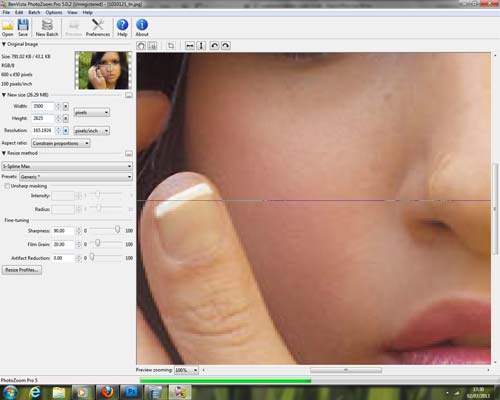 Increasing the Resolution
Increasing the Resolution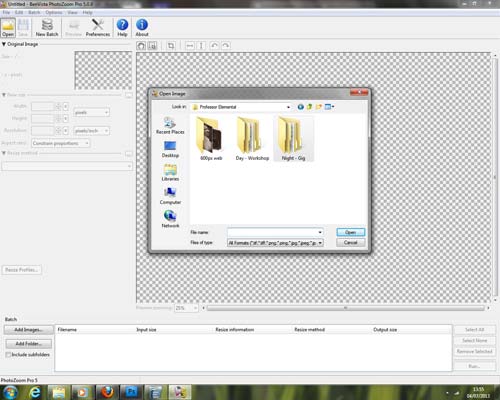 Batch Processing
Batch Processing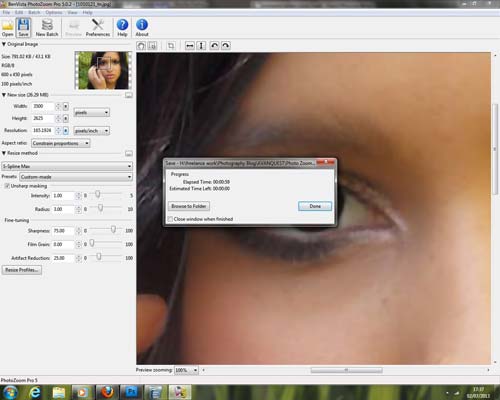 Saving the Image
Saving the Image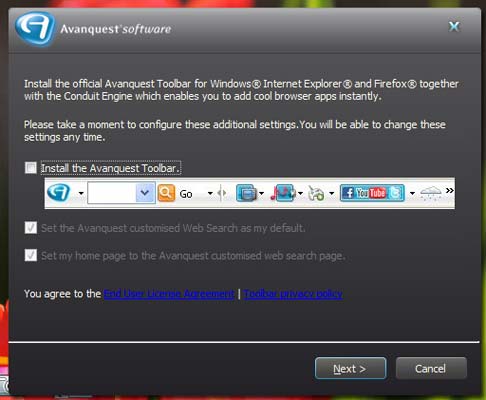 Installing the Toolbar
Installing the Toolbar
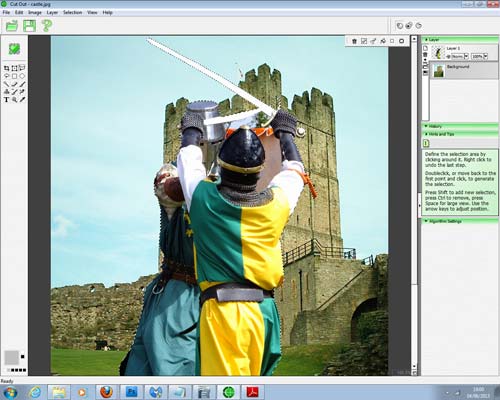 Cutting Out
Cutting Out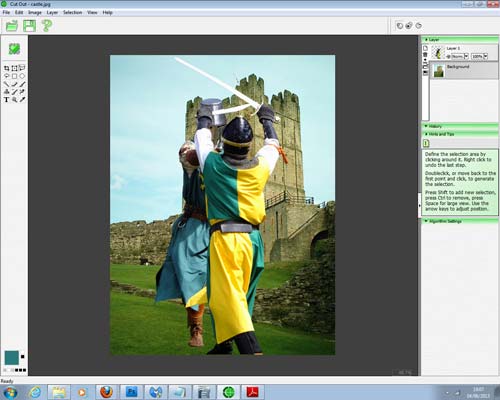 Placing on a Background
Placing on a Background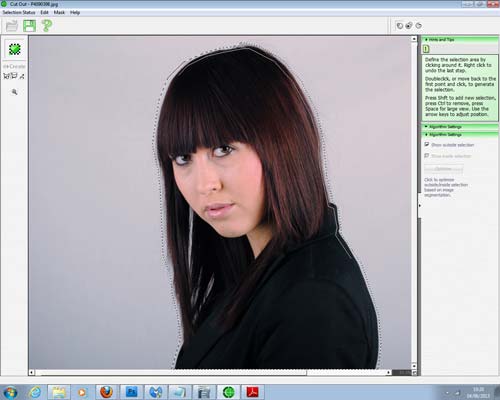 Inside Outside Matting
Inside Outside Matting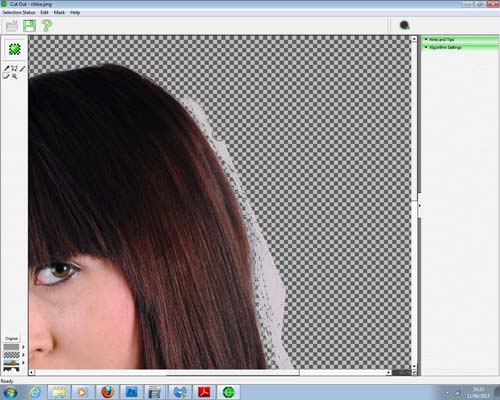 Eraser Tool
Eraser Tool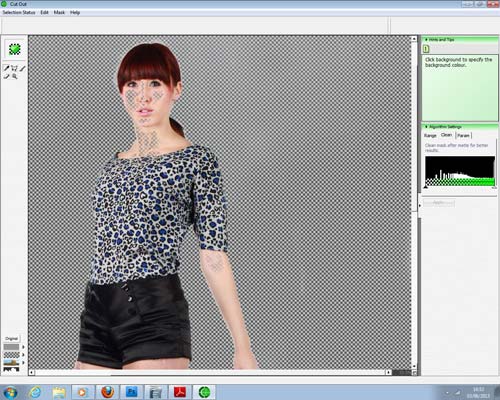 Selecting Flaws
Selecting Flaws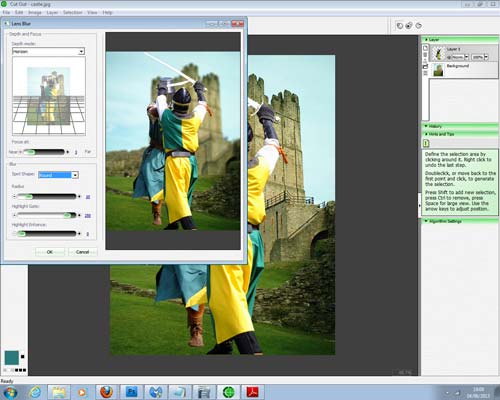 Create Lens Blur
Create Lens Blur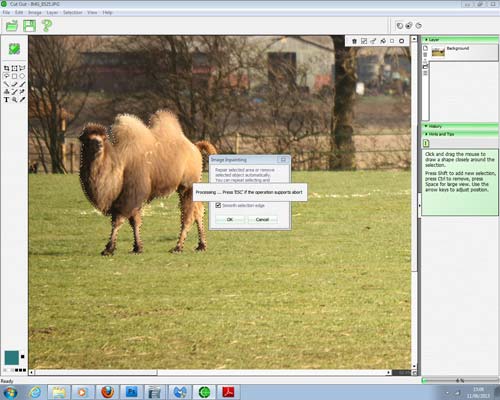 Inpaintin Tool
Inpaintin Tool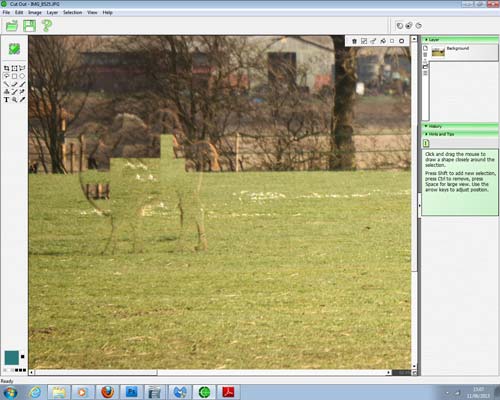 Inpainting Tool
Inpainting Tool






























